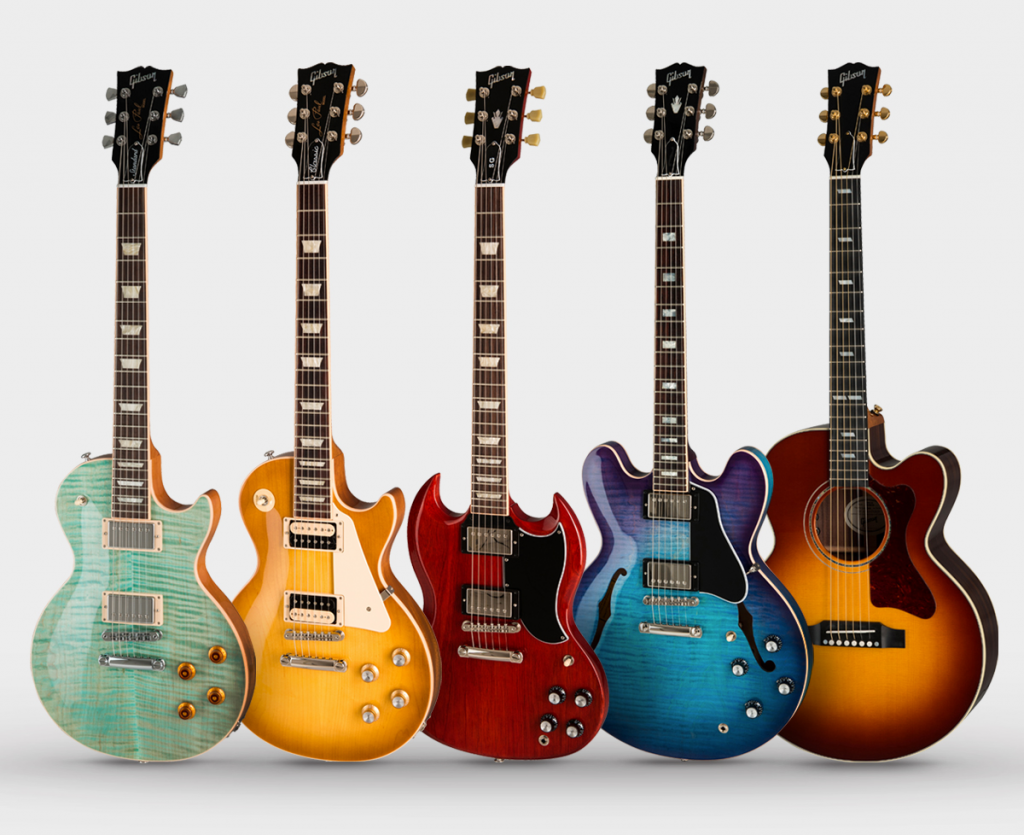Gibson - Past, Present, and Future
Posted on Wed 13 February 2019 in namm-2019
Gibson is synonymous with guitars and music. They have put more instruments in the hands of trail blazing musicians of the 20th century than any other brand.
They have had ups and down over years, had many hits, but equal amounts of misses with iconic guitar designs but ultimately have stayed near the top of the game for over a century. All this was thrown into question last year when the world famous brand announced bankruptcy. The music industry took in a collective breath waiting to see what the future held for the much loved company behind some of the most famous guitars, sounds, and riffs ever created.
Before we speculate about the future, let's have a little history lesson about Gibson's rise and fall from grace.
Founded by Orville Gibson (a name that can only be Victorian!) at the tail end of the 19th century, with absolutely no formal training, Gibson started making carved Mandolins. These were revolutionary at the time as most instruments of the time were pressed or bent, he took inspiration from the arched top of a violin.
His mandolins were "unlike any previous flat-back instrument," according to music historian Paul Sparks. His company's manufacturing standards were very high, and his instruments heavily marketed.
He applied for and was granted a patent on the design. The sides too were carved out of a single block of wood, rather than being made of bent wood strips. More importantly, they were louder and more durable than contemporary fretted instruments, and musicians soon demanded more than he was able to build in his one-man shop.
We have to remember that the Mandolin was THE instrument of the time. A lot like British Folk music of the 20th century it’s popularity came in waves. The first started around 1744 after the invention of the metal-string mandolin by the Vinaccia family in Italy. This first coming lasted for about 60 years until the Napoleonic Wars of 1815 put a stop to all the excitement.
The Second wave (which Orville rode during the 1890s) was kick started by the Paris Exposition of 1878. After being inspired to pick up the instrument again, groups of Italian mandolinists travelled Europe in the early 1880s and slowly made their way over to the United States by the mid-1880s, playing and teaching their instrument along the way.
The instrument's popularity continued to increase during the 1890s and mandolin popularity was at its height in the early years of the 20th century. Thousands were taking up the instrument as a pastime, and it became an instrument of society, taken up by young men and women. Mandolin orchestras were formed worldwide, incorporating not only the mandolin family of instruments, but also guitars, double basses and zithers.
As an interesting side note (well I think it is) for our local customers. The first ever Gibson UK dealer was A. De. Vekey, a Ukulele Luthier, and teacher born in Christchurch and distributed Gibson instruments from his shop located in Stafford Road, Bournemouth.
[caption id="attachment_20890" align="alignnone" width="761"]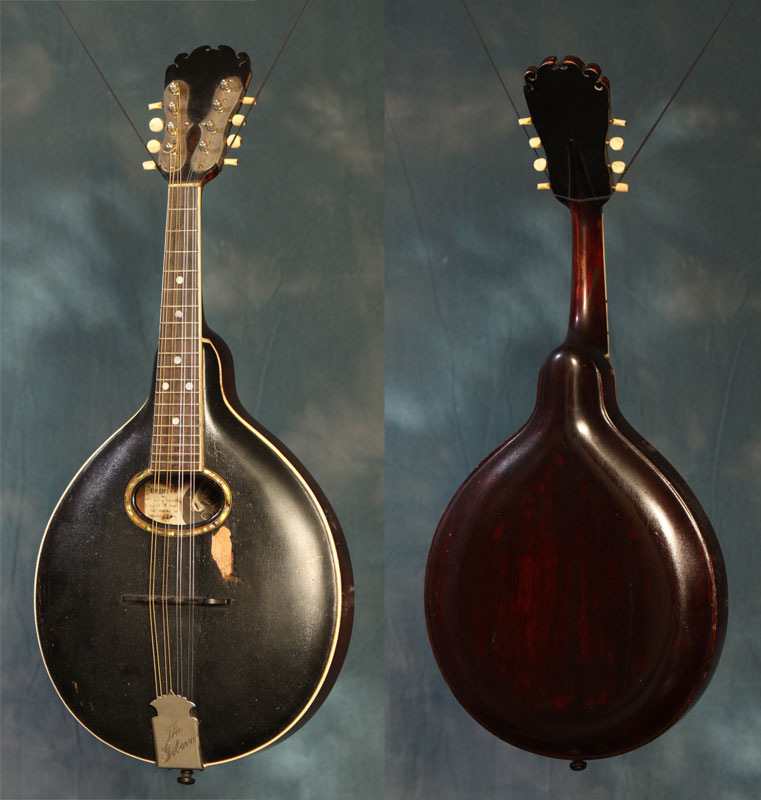 ]({static}/uploads/2019/02/MF7804.jpg) Orville Gibson designed Mandolin circa 1918[/caption]
]({static}/uploads/2019/02/MF7804.jpg) Orville Gibson designed Mandolin circa 1918[/caption]
Unable to meet the demand for the instruments himself and based on the success seen with the ones he was able to produce, five Kalamazoo businessmen formed the Gibson Mandolin-Guitar Mfg. Co., Ltd., in 1902. Within a short period after the company was started, the board passed a motion that "Orville H. Gibson be paid only for the actual time he works for the Company”. Initially, the company produced only Orville Gibson's original designs. Orville Gibson died in 1916.
A year later they employed Lloyd Loar who helped modernise a lot of the range by introducing F-holes, longer necks and introducing a different bridge position among various other changes. He was also the creator of the L-5 Acoustic guitar that Gibson still produces to this day.
By this point Mandolins have fallen out of fashion and Big Bands were the in thing during the roaring 20s. Over the next decade Gibson introduced different big bodied guitars and even innovated during the depression of the 1930s when they introducing the ES (Electric Spanish) series of guitars, with the ES-150.
[caption id="attachment_20887" align="alignnone" width="600"]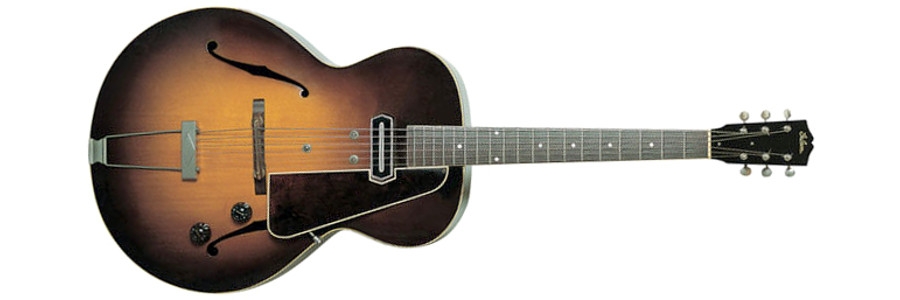 ]({static}/uploads/2019/02/gibson-es-150.jpg) Gibson ES-150[/caption]
]({static}/uploads/2019/02/gibson-es-150.jpg) Gibson ES-150[/caption]
During the recession a different kind of music was being played and heard throughout the United States thanks to new technologies in recording, record distribution and radio airplay. This progression had allowed record companies to go out a find new talent further afield than their studio in big cities.
Audiences had grown tired of clean cut music and wanted something real, and raw. Luckily for these record companies raw, new talent was on their doorstep. They sent scouts to these rural communities to capture the sound of the people, what was captured in those recording changed music forever.
Although this proved to be an incredibly fertile venture as it brought the blues to the masses, it must remain in our minds that the blues was born out of the horrible conditions black slaves were forced to work and live in. Although variants of the blues were sung on plantations long before the 30s it wasn’t until this time that artists were writing, playing and performing the blues.
Robert Johnson, armed with his 1928 Gibson L-1 went on to be known as the most important blues singer that ever lived. He certainly wasn’t alone in this musical revolution but he certainly was one of the most influential musicians that has ever lived and also a played a pivotal role in the fortunes of Gibson in 30 years time, although he didn’t know it.
(I highly recommend checking out a series called ‘American Epic’ if this chapter of American Folk Music is of interest to you.)
[caption id="attachment_20884" align="alignnone" width="600"]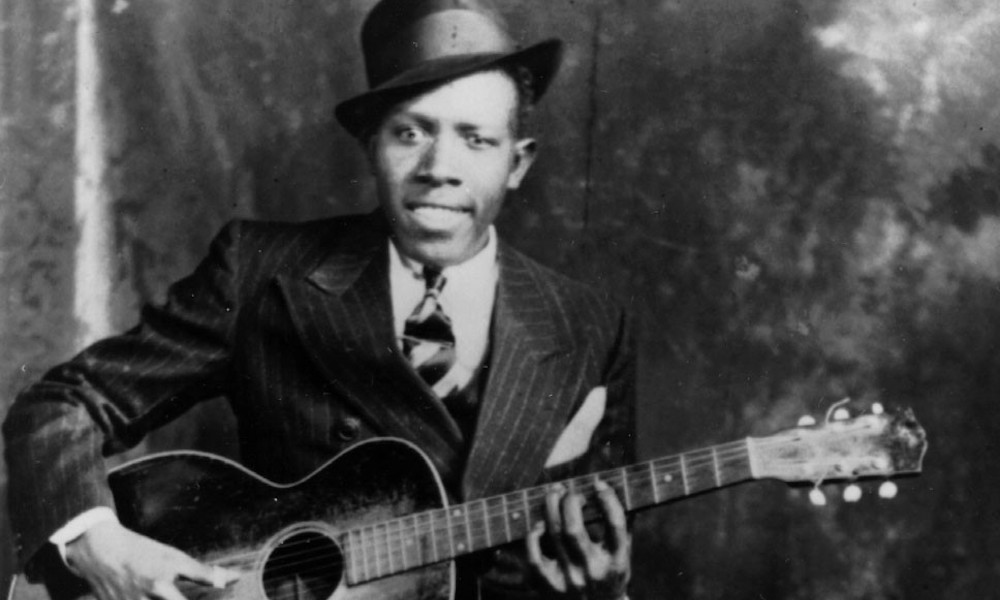 ]({static}/uploads/2019/02/Robert-Johnson.jpg) Robert Johnson with his Gibson L-1[/caption]
]({static}/uploads/2019/02/Robert-Johnson.jpg) Robert Johnson with his Gibson L-1[/caption]
As the decade reached it’s end, Europe erupted in conflict and subsequently instrument manufacturing at Gibson slowed due to shortages of wood and metal, and Gibson began manufacturing wood and metal parts for the military.
Post war Gibson is where the company matured into the one we know and love. After being purchased by Chicago Musical Instruments in 1944 they would go on to hire a man named Ted McCarty, he would be pivotal in the modernisation of the brand.
Ted soon made his way to the top of the company as president in 1950, he also understood how important artist endorsement would be in order to take the company to the next level.
Innovation was the core idea as the market was becoming more competitive with the likes of young startups like Fender making waves with their new fangled electric guitar, the Fender Broadcaster.
Gibson would have to create something that could compete and also market it like never before.
Enter Mr Les Paul: A celebrity musician, TV personalty (along with his wife, Mary Ford), and constant tinkerer of the guitar. In the early 50s he would present Gibson with what has been affectionately called ‘The Log’.
Made of solid pine and weighing a ton, the design was rejected, but not before it planted a seed in the mind Ted McCarty. Along with factory manager John Huis and his team the Les Paul guitar was born. Les had input in the process but ultimately it was McCarty’s creation with Les’ name on the headstock.
The original was released in 1952 with p90 pickups and trapeze tailpiece, offered in gold and a year later, black, known as the Custom. Each features a mahogany body with a maple cap (Les Paul wanted this reverse this wood choice to increase sustain but that was rejected by McCarty due to the weight it would incur) over the subsequent years modifications were applied to the design, most notably in 1955 when Seth E. Lover invented the humbucking pickup. Before Lover, electric guitarists were forced to cope with the 60-cycle hum received by single coil pickups. It was while working as an amplifier designer at Gibson, that Lover figured out how to wire two coils electrically out of phase and with reversed magnetic polarities. The effect was to cancel the hum before it reached the amp and the result was the birth of the humbucking pickup. A side effect of this dual magnet design is that it also increased the output of the pickup, which is something that would go someway in shaping the sound of the Les Paul later on.
This new pickup design was debuted on the Les Paul in the 1957 and would set the world of fire… 10 years later, as the Les Paul was a failure and production was stopped in 1960, it was redesigned and re-released as the SG (Les hated the design and refused to have his name atop it), the Les Paul, as we know it, wasn’t brought back until 1968.
The Les Pauls from the 50s were seemingly a little before their time, as we fast forward a few years a new generation of guitarists were looking to the past for their future.
[caption id="attachment_20888" align="alignnone" width="600"] ]({static}/uploads/2019/02/Ch-1-Les-Playing-LP.png) Les Paul with a Les Paul[/caption]
]({static}/uploads/2019/02/Ch-1-Les-Playing-LP.png) Les Paul with a Les Paul[/caption]
They absorbed the sounds of 1930s and electrified it using the more powerful sounding Les Paul into the new amps that were being produced by notable UK companies like Marshall, Orange, Hiwatt and Vox. This combination of blues influenced teens, a Les Paul, plugged into a high wattage, high volume amps produced a singing sustain that launched rock as we know it today.
Over the subsequent years since the 1950s Gibson introduced different shaped bodies such as the the ‘V’, Explorer, Corvus among other oddities. Such is the way with music, Gibson’s designs wavered in popularity over the course of the next few decades. Throughout the 70s nearly every band worth it’s salt had a guitar hero rocking one of these designs.
Interest waned in the 80s due to the advent and rise of the synth and hair metal guy with point Japanese guitars. This was brought back into the mainstream by a gentleman in a top hat, that ironically wasn’t playing a Les Paul. Slash was playing a very good copy by a luthier named Chris Derrig. Nevertheless Gibson were back rocking stages the world over but still not quite to the same levels that they were during the 60s and 70s.
[caption id="attachment_20889" align="alignnone" width="500"]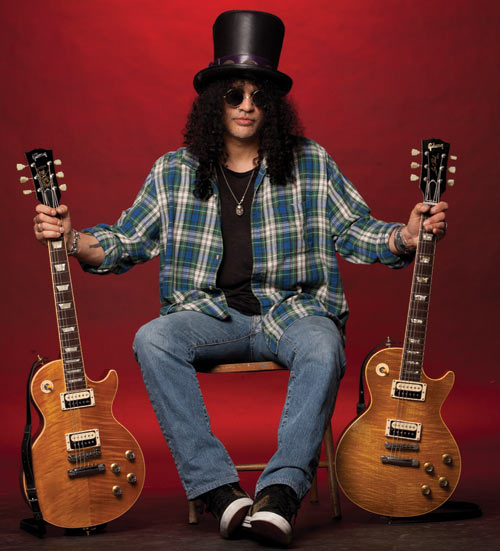 ]({static}/uploads/2019/02/d25d9c28-f07f-44cf-b9c2-928a5f35461b.jpg) Slash with his Chris Derrig and a Gibson copy of the Derrig. Oh the irony...[/caption]
]({static}/uploads/2019/02/d25d9c28-f07f-44cf-b9c2-928a5f35461b.jpg) Slash with his Chris Derrig and a Gibson copy of the Derrig. Oh the irony...[/caption]
This is where the story takes a bit of a turn for the worse. Gibson was bought by Henry E. Juszkiewicz, David H. Berryman, and Gary A. Zebrowski in January 1986. Although they turned the fortunes of the company around during the late 80s and early 90s, in recent years the fortunes of Gibson have not been the best.
The legendary company has found itself in all sorts of financial woes brought on by bad business moves, and ultimately falling out of favour as an instrument maker due to diversifying away from their core business of making quality instruments, even going so far as to be renamed ‘Gibson Brands’ and the absolute car crash that was the ‘robot’ guitar in the mid 2000s. All this while still insisting on a rather steep asking price resulted in bankruptcy in 2018.
Other brands have filled the gap with their offerings: one such such example of the high end is the PRS’ Single Cut series of guitars (which Gibson failed to successfully sue in 2005 regarding the blatant copying). These are exceptionally well made guitars that are everything you want in a killer single cut, except it’s not a Gibson.
It’s that sort of brand power that has kept Gibson from dying completely. When the news broke last year the guitar industry wasn’t shocked, the writing had been on the wall for a while but it was saddened.
Gibson failed to show for NAMM 2018, instead opting to attend CES (don’t ask…)
Seemingly enough was enough for the investors, Juszkiewicz was so out of touch with what was happening and why, he was ousted as CEO of Gibson Brands.
A few months later, in October it was announced that there was to be a new head honcho in the form of James (JC) Curleigh. [He was brought in from Levis Strauss after he was tasked (and succeeded) with the task of bringing the heritage brand into the modern age]. This is his exact job description for Gibson. Take the heritage of Gibson, a heritage that we have that we have outlined here and don’t let it stop there. Let it be seen as a blip in the storied history of the company, much like that of Apple during the late 80s/early 90s. Using that heritage and knowledge to push forward with a fresh new approach and put Gibson back at the top.
What does the future hold for Gibson? Well if I could answer that I wouldn’t be sat here drinking tea writing about guitars, I’d have invested in the stock market and be playing in the sun somewhere that isn’t Bournemouth.
What I can tell you is that after seeing JC’s speech and the lineup that Gibson unveiled at NAMM I’m optimistic that Gibson can turn it around.
Gone is the incredibly bloated and complicated range of guitars that plagued the product catalog.
They are focusing on their core business and not the electronic subsidiaries acquired under Juszkiewicz leadership. If I could mention Apple just one last time, when Steve Jobs took the helm once again in 1997 he basically stopped production of nearly everything. He scaled back their offerings to two ranges, ‘portable’ and ‘desktop’, with two tiers within those ranges ‘consumer’ and ‘pro’. Although the guitar industry cannot be compared to the computer industry circa late 1990s, looking at this laser-focused approach to business is key to helping the company out of the hole they have found themselves in.
There is light at the end of the tunnel and who knows, in 10 years time we may see Gibson once again being the best at what it used to do. Make great guitar for great musicians.
Let's leave you with what Mr Curleigh has to say at NAMM:
